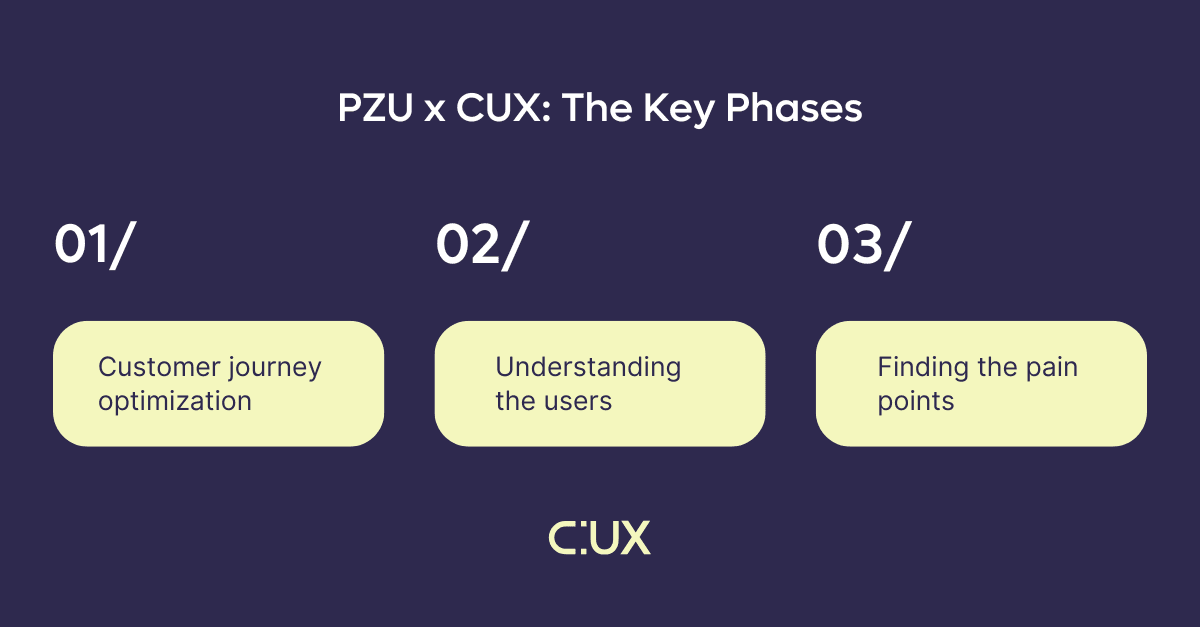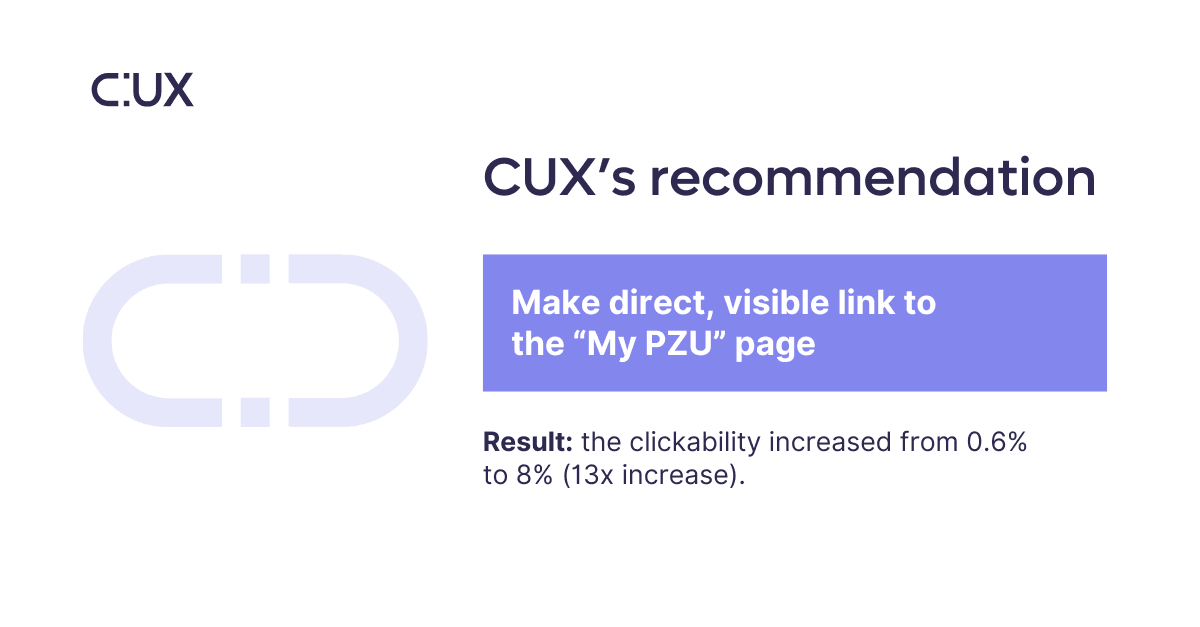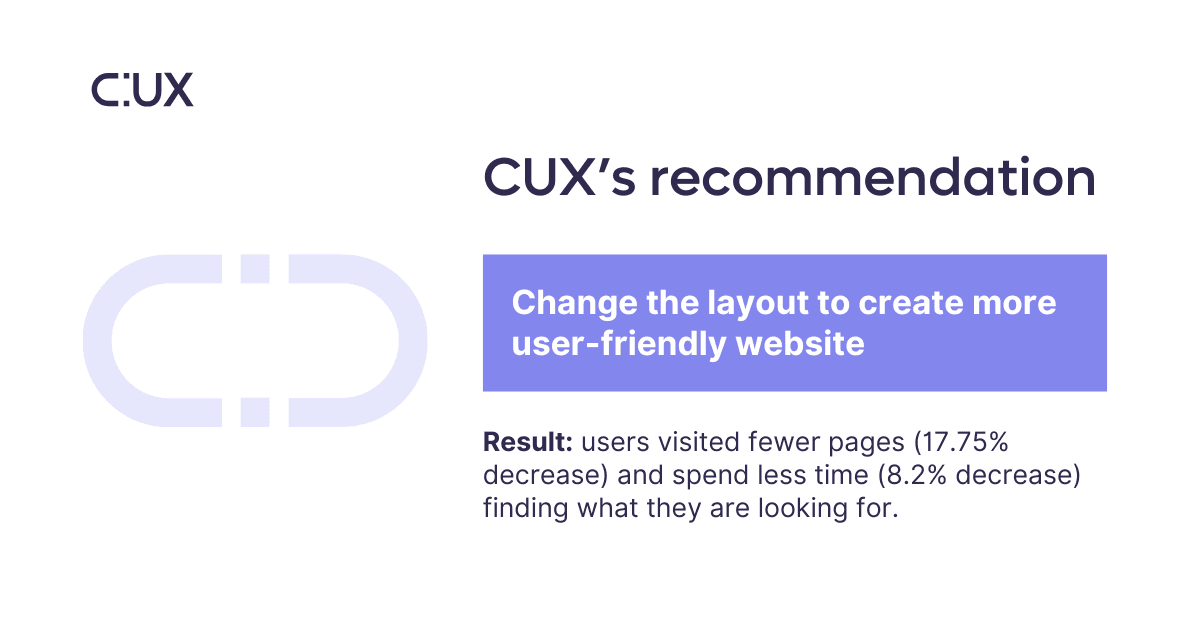From trial and error to results: How PZU cut frustration by 70% in 4 months
PZU Group is one of the largest financial institutions in Poland and in Central and Eastern Europe that was first established in 1803. With previous experience of user analytics through tools such as Google Analytics, they were looking to extend their analyses by meaningful behavior analytics, and combine the previous quantitative measures with qualitative ones.
70%
drop in frustration

Challenge
PZU had already noticed that some key areas of their website were underperforming, but they couldn’t explain why. Despite relying on quantitative analytics, they lacked insight into how users behaved in critical moments, and what caused them to drop off.
Without access to behavioral context, the team considered testing improvements blindly, based on intuition. But this “trial and error” approach was expected to take up to a year and wouldn’t guarantee results. They needed a faster, insight-driven way to identify real usability issues and optimize the customer journey.

Goals
- Customer journey optimization PZU aimed to better understand the steps their customer take on their website and measure whether their initial hypothesis regarding ideal customer journey was accurate. Afterward, they hoped to optimize the journey to provide a seamless and effortless experience on the website.
- Understanding the users Even though PZU is well experienced with data and traffic analytics, they noticed a need for a deeper understanding of their website users, including their behaviors, preferences, and needs.
- Finding pain points The team wanted to analyze the exact steps that lead to issues with the contact form and “My PZU” button, in order to identify what causes users to drop off or miss these key areas.
Our approach
Reviewing behavioral patterns with heatmaps and session recordings
CUX began by identifying behavioral hotspots on key pages - particularly areas surrounding the “My PZU” button and contact form. Using visit recordings, the team observed how users navigated, where they hesitated, and what interactions were missing entirely. To go deeper, the “Find out” feature was used to isolate recordings of users who failed to complete expected actions, revealing exactly what disrupted their journey.
Analyzing drop-offs with Conversion Waterfalls
The team used Conversion Waterfalls to analyze customer journeys step by step. This revealed where drop-offs occurred, which elements users ignored, and what prevented them from continuing. The tool was especially helpful in tracking complex goals and identifying which actions led to failed conversions.
Comparing desktop and mobile experiences
PZU also used CUX to compare user behaviors across devices. The analysis focused on performance differences between desktop and mobile to help optimize the experience on both platforms.
What our client said
CUX enabled us to introduce the customer's perspective to our website. We've obtained the first analytic's conclusions in just a month!” “Previously, we analyzed websites from the Google Analytics perspective. It quickly showed us that certain sessions do not go along quite as we would like them to. We knew something was wrong and worked through trial and error to find the problem. Now with CUX, we can quickly locate those issues.
Impact
“My PZU” page clickability increased 13×
The main goal for PZU was to successfully direct the users to “My PZU” page, where they can log in or create an account and purchase the product. Before using CUX, that button was hidden on the left corner. However, after analyzing the waterfalls and sessions, it turned out that the option wasn’t as intuitive as it seemed. The users were not clicking the “Log in” button, which would take them directly to “My PZU” page. Instead, they were going to Help Center to look for the link there. Therefore, the conclusion was: we have to make the journey easier by making direct, visible link to the page.
After implementing a prominent box on the top of the page to test the hypothesis, the clickability increased from 0.6% to 8%, proving that the visibility was a pain point.

Contact form usage increased 2.5×
By making a strategic change to the contact section on their website, PZU significantly improved user engagement and accessibility. Previously located on the left side, the contact form was not centrally positioned and even disappeared on mobile devices. However, after implementing the modification, the number of users submitting the contact form increased by more than 2.5 times compared to the previous state. We can call this a quick win - thanks to a small change on the website, PZU immediately responded to the needs of their clients.
Customer journey simplified
PZU’s set a clear goal for the analysis -they wanted to understand the users and their journey, and ultimately shorten and simplify it. They set a hypothesis: increased usability and easier navigation will help customers find faster what they are looking for.
Before, the average number of pages visited before finding the contact form was 2.31. After implementing the changes, it decreased to 1.9 pages per user, which is equal to 17.75% change. Moreover, the average visit time on that page decreased by 8.2%. Therefore, thanks to the changes, the users were able to find quicker and easier what they needed.

Frustration reduced by 70%
Thanks to the collaboration, they managed to decrease the time to only 4 months and gain immediate results. The effects include: 70% decrease in frustration on key pages.
3× shorter optimization process
Before discovering CUX, the team was planning to intuitively try different scenarios, hoping that one of them would actually work and increase the clickability and form submissions. According to the team, this “trial and error” method would take approximately a year to bring the results they wanted.
With CUX, they were able to skip steps and follow the decisions backed up with data and facts from the very beginning. Thanks to that, the analysis revealed the changes they needed to make almost instantly, and the process of improving the website took only 4 months.